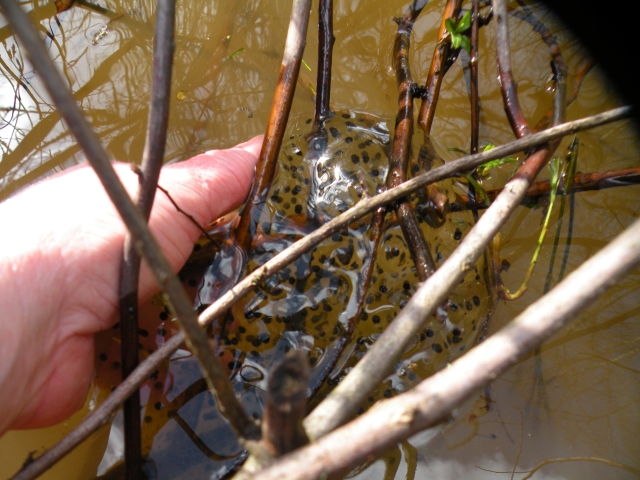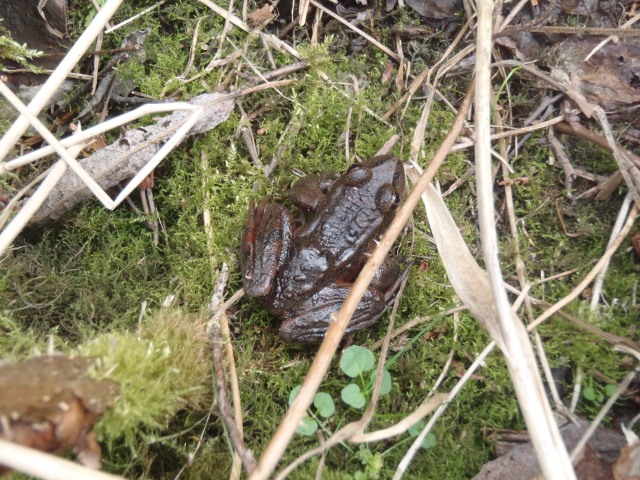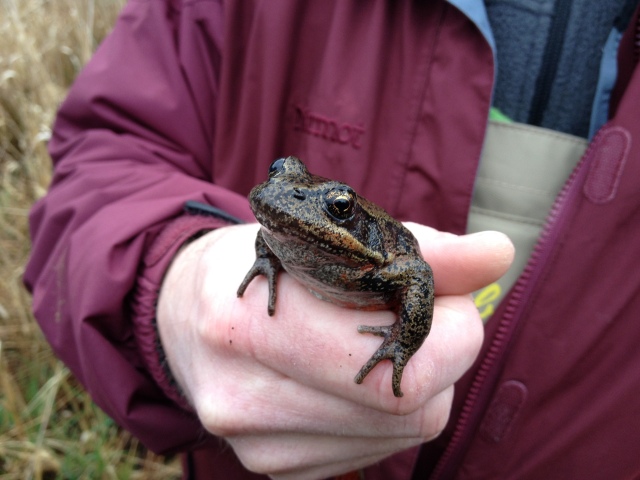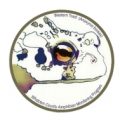
Northern Red-legged frogs singing
Background: The Northern Red-legged Frog (Rana aurora) is distributed from Northern California to Southwest British Columbia. The species occurs from sea level to about 2,000 feet elevation in Whatcom County.
Adult and Juvenile Description: The frogs are brown to reddish-brown and are usually spotted to flecked with small ink black blotches on the back and sides. Dark banding is common across the legs. The skin is smooth and a dorsolateral fold is present from behind the eye and extending most of the length of back. A dark mask is typically present with a light stripe along the upper jaw extending almost to the shoulder.
This frog has longer legs than the closely related Oregon Spotted Frog and typically escapes threats with a series of rapid, powerful leaps away from or toward the water. The underside of the hind legs are colored red (the color appears to be under the skin rather than on the surface), except for small juveniles, on which the undersides of the legs may be light pink or honey colored. The red color occasionally occurs on the belly and sides on mature individuals. The groin is mottled with yellowish-green patches and prominent black blotches.

The eyes are set to the sides of the head, compared to spotted frogs which have eyes oriented towards the top of the head. Females can reach up to 4 inches in length and males to at least 2 3/4 inches. The advertisement call of this frog is very soft (described as chuckling, clucks, or grunts) and the male is often underwater when calling so it is not always audible. Northern Red-legged Frogs sometimes vocalize out of season in autumn.
Larval Description: Tadpoles are sandy brown to dark brown in color on the upper body with a creamy to a dark mottled belly. In early stages of development, the upper tail fin is tall and extends to the middle of the back of the body, giving it a sailfin appearance. Later in development, the tail is proportionally longer and the upper fin is not high. The tadpoles can reach four inches total length.

Egg Mass Description: The egg masses are moderately large (softball size) and loose, with distinct individual egg capsules. Egg laying occurs from mid February to mid March in Whatcom County. Egg masses are typically placed in vegetated areas of wetlands at depths from about 18 inches to just below the surface and attached to vegetation. Later in development the masses often float to the surface. The breeding sites can be permanently or temporary inundated, but the wetlands usually maintain water into August. Breeding begins when water temperatures reach 6C.

Habitat: This species inhabits woodlands and riparian areas outside the breeding season. Northern Red-legged Frogs are excellent jumpers and will move quickly to escape when approached. They do not vocalize when they leap (unlike juvenile bullfrogs).
For more information on this frog:















